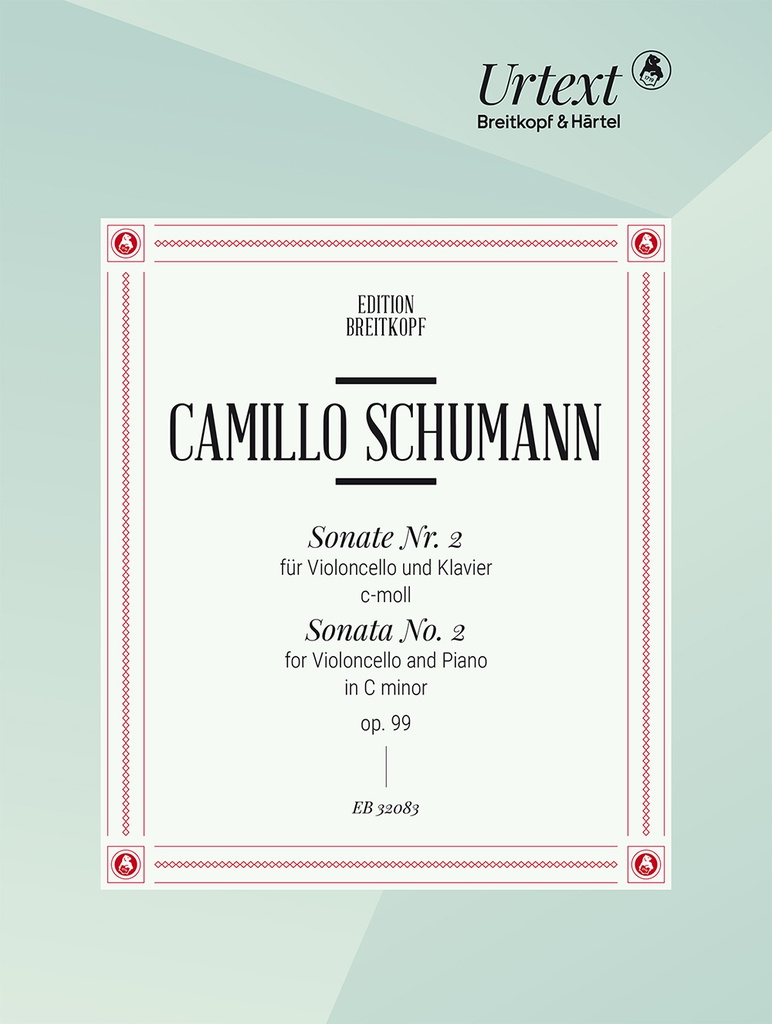Sonata No.2 in C minor, Op.99
Beschrijving
There are many composers about whom it is believed, today, that they composed conservatively, or against the taste of their time. The question is also raised, today, which extract of this large amount of effective and high-quality music, unknown for the most part, should receive our attention; which of it is "worth" rediscovering or re-editing. Camillo Schumann is one of the most important representatives of these composers, but his works are still largely unknown today. He was born on 10 March 1872 in Königstein, Saxony. His musical language combines the sound world of Brahms with the grand, late-romantic Liszt School. He wrote piano parts of incredible power and virtuosity, approaching the sounds of Rachmaninoff. His wonderfully individual melodic language makes these works a valuable testimony to a composer who never had his due recognition.
The cello sonatas Opp. 59 (EB 32082) and 99 (EB 32083) are the first of three works for this combination. Op. 59 was composed around 1905/06, Op. 99 followed in 1932. Nothing is known so far of the circumstances of the composition of this work, including for whom it was composed. However, it is quite evident that Schumann wrote it, like most of his works, primarily for his own concerts and befriended musicians. The extensive entries in the piano part bear witness to a considerably practical approach. Crossed-out bars, notes added or crossed out in chords as well as a number of revisions of other kinds are more the rule than the exception. The composer's own fingerings written in the piano part also underline this assumption. The present edition contains two solo-parts each. One "clean" Urtext-part free of any additions from the editor and a second one with bowing marks and fingerings by Maria Kliegel who recorded both sonatas for the first time with the label Naxos.
Both sonatas show evident resemblance to the works of this combination by Johannes Brahms and are therefore a "must have" for ambitious cellists.
